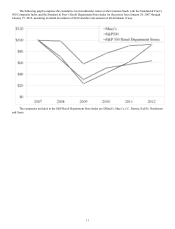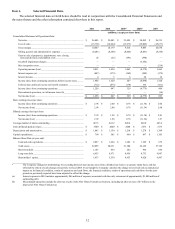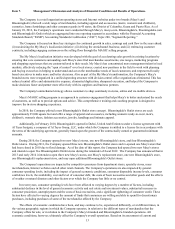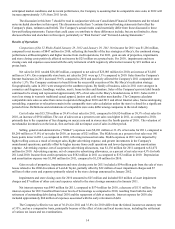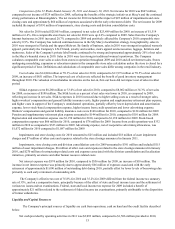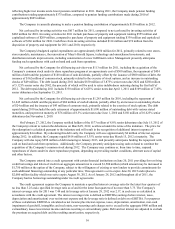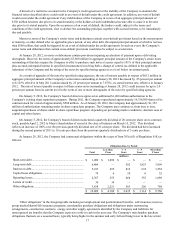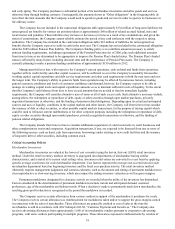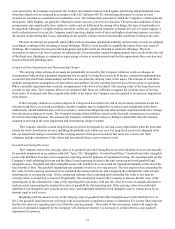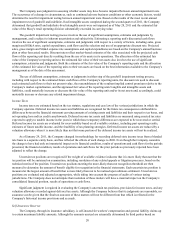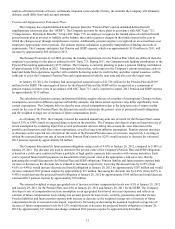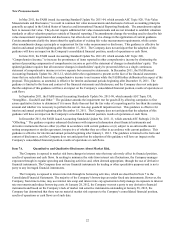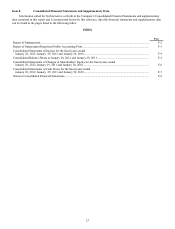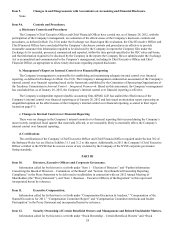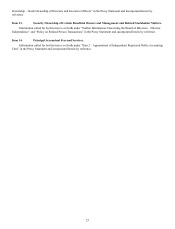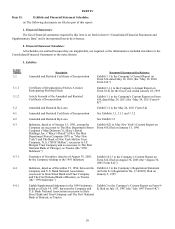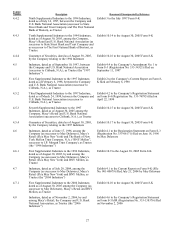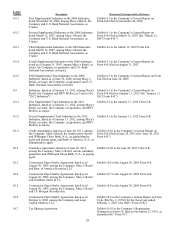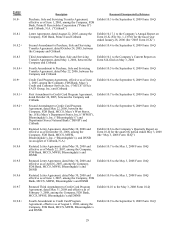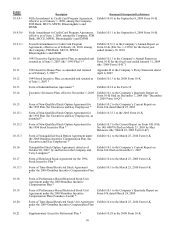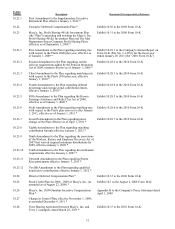Macy's 2011 Annual Report Download - page 27
Download and view the complete annual report
Please find page 27 of the 2011 Macy's annual report below. You can navigate through the pages in the report by either clicking on the pages listed below, or by using the keyword search tool below to find specific information within the annual report.21
analysis of historical trends of losses, settlements, litigation costs and other factors, the amounts the Company will ultimately
disburse could differ from such accrued amounts.
Pension and Supplementary Retirement Plans
The Company has a funded defined benefit pension plan (the “Pension Plan”) and an unfunded defined benefit
supplementary retirement plan (the “SERP”). The Company accounts for these plans in accordance with ASC Topic 715,
“Compensation - Retirement Benefits.” Under ASC Topic 715, an employer recognizes the funded status of a defined benefit
postretirement plan as an asset or liability on the balance sheet and recognizes changes in that funded status in the year in
which the changes occur through comprehensive income. Additionally, pension expense is recognized on an accrual basis over
employees' approximate service periods. The pension expense calculation is generally independent of funding decisions or
requirements. The Company anticipates that Pension and SERP expense, which was approximately $150 million in 2011, will
increase by approximately $65 million in 2012.
The Pension Protection Act of 2006 provides the funding requirements for the Pension Plan which are different from the
employer's accounting for the plan as outlined in ASC Topic 715. During 2011, the Company made funding contributions to the
Pension Plan totaling approximately $375 million. The Company is currently planning to make a pension funding contribution
of approximately $150 million in 2012. Management believes that, with respect to the Company's current operations, cash on
hand and funds from operations, together with available borrowing under its credit facility and other capital resources, will be
sufficient to cover the Company's Pension Plan cash requirements in both the near term and also over the longer term.
At January 28, 2012, the Company had unrecognized actuarial losses of $1,558 million for the Pension Plan and $195
million for the SERP. The unrecognized losses for the Pension Plan and the SERP will be recognized as a component of
pension expense in future years in accordance with ASC Topic 715, and is expected to impact 2012 Pension and SERP expense
by approximately $155 million.
The calculation of pension expense and pension liabilities requires the use of a number of assumptions. Changes in these
assumptions can result in different expense and liability amounts, and future actual experience may differ significantly from
current expectations. The Company believes that the most critical assumptions relate to the long-term rate of return on plan
assets (in the case of the Pension Plan), the discount rate used to determine the present value of projected benefit obligations
and the weighted average rate of increase of future compensation levels.
As of January 29, 2011, the Company lowered the assumed annual long-term rate of return for the Pension Plan's assets
from 8.75% to 8.00% based on expected future returns on the portfolio. The Company develops its expected long-term rate of
return assumption by evaluating input from several professional advisors taking into account the asset allocation of the
portfolio and long-term asset class return expectations, as well as long-term inflation assumptions. Pension expense increases
or decreases as the expected rate of return on the assets of the Pension Plan decreases or increases, respectively. Lowering or
raising the expected long-term rate of return on the Pension Plan's assets by 0.25% would increase or decrease the estimated
2012 pension expense by approximately $8 million.
The Company discounted its future pension obligations using a rate of 4.65% at January 28, 2012, compared to 5.40% at
January 29, 2011. The discount rate used to determine the present value of the Company's Pension Plan and SERP obligations
is based on a yield curve constructed from a portfolio of high quality corporate debt securities with various maturities. Each
year's expected future benefit payments are discounted to their present value at the appropriate yield curve rate, thereby
generating the overall discount rate for Pension Plan and SERP obligations. Pension liability and future pension expense both
increase or decrease as the discount rate is reduced or increased, respectively. Lowering the discount rate by 0.25% (from
4.65% to 4.40%) would increase the projected benefit obligation at January 28, 2012 by approximately $107 million and would
increase estimated 2012 pension expense by approximately $11 million. Increasing the discount rate by 0.25% (from 4.65% to
4.90%) would decrease the projected benefit obligation at January 28, 2012 by approximately $100 million and would decrease
estimated 2012 pension expense by approximately $10 million.
The assumed weighted average age-graded rate of increase in future compensation levels was 4.5% at January 28, 2012
and January 29, 2011 for the Pension Plan, and 4.9% at January 28, 2012 and January 29, 2011 for the SERP. The Company
develops its rate of compensation increase assumption on an age-graded basis based on recent experience and reflects an
estimate of future compensation levels taking into account general increase levels, seniority, promotions and other factors.
Pension liabilities and future pension expense both increase or decrease as the weighted average rate of increase of future
compensation levels is increased or decreased, respectively. Increasing or decreasing the assumed weighted average rate of
increase of future compensation levels by 0.25% would increase or decrease the projected benefit obligation at January 28,
2012 by approximately $17 million and change estimated 2012 pension expense by approximately $4 million.


